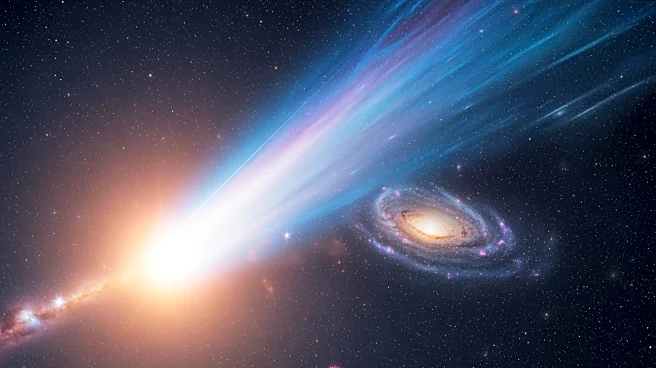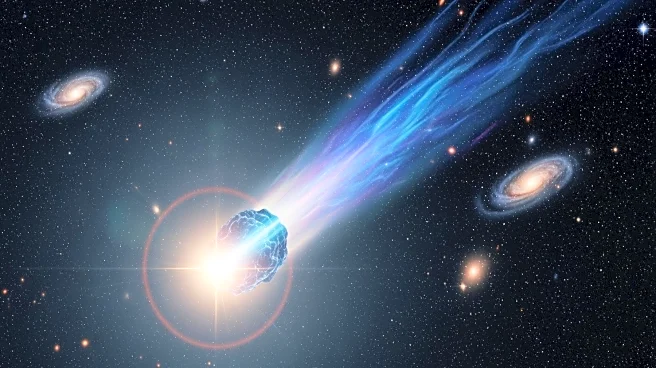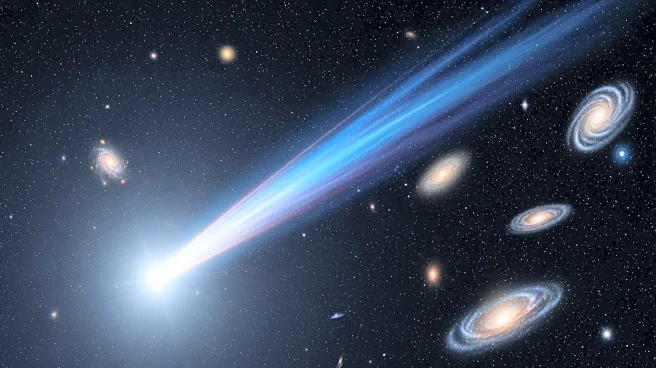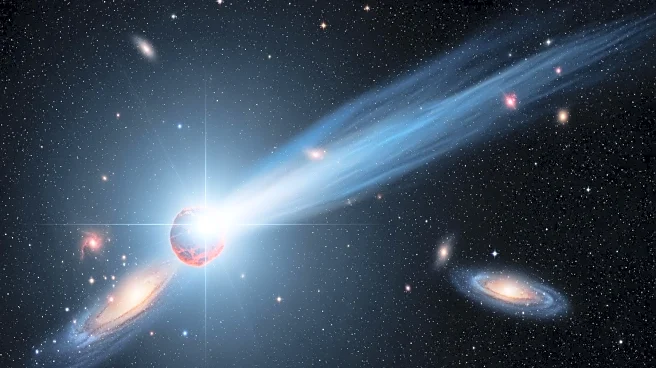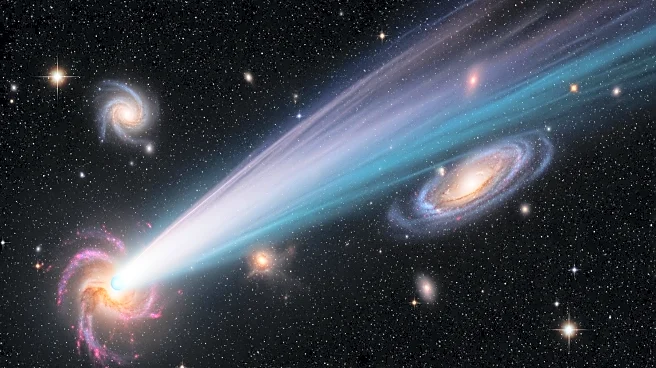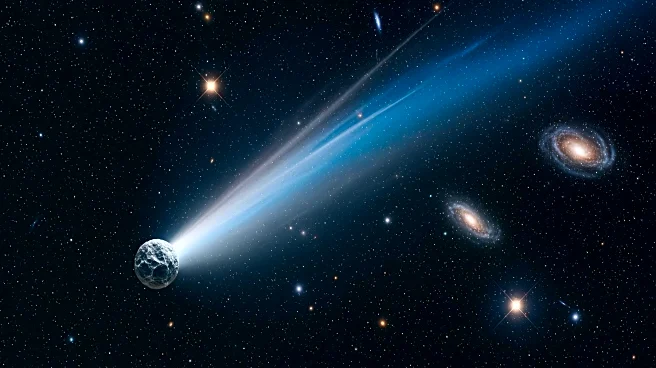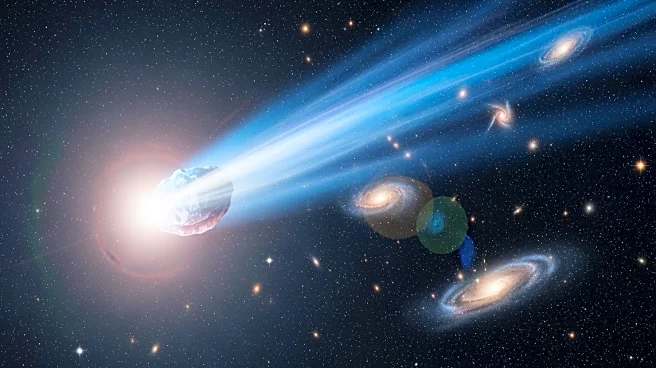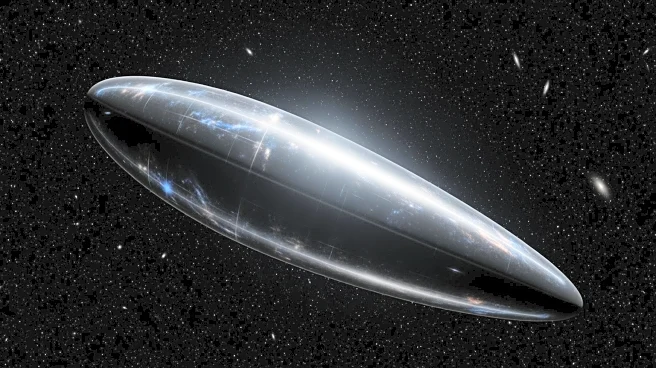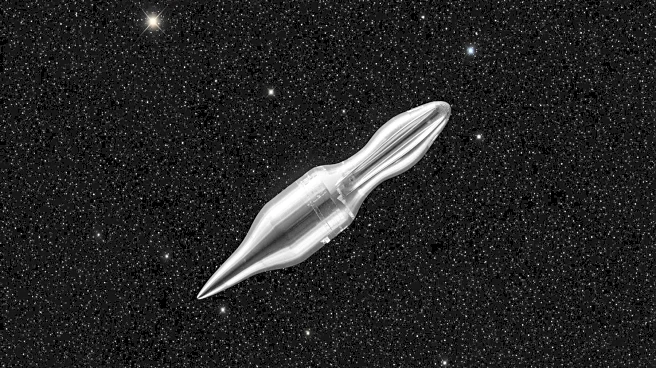What's Happening?
The interstellar comet 3I/ATLAS, identified as the third known interstellar object in our solar system, is nearing the sun and entering its most active phase. Scientists anticipate increased activity as the comet's
frozen gases react to solar radiation, potentially making it appear brighter and more dramatic. Research teams worldwide are preparing to observe the comet using telescopes on Earth and in orbit, aiming to gather data on its origins and composition. Instruments aboard space missions heading toward Jupiter are also being redirected to collect information.
Why It's Important?
The comet's passage offers a rare opportunity to study interstellar material, providing insights into the formation of matter around distant stars. Understanding the behavior and composition of such objects can enhance our knowledge of the galaxy and the processes that shaped our solar system. This event could influence future space exploration strategies and scientific research priorities, as astronomers seek to unravel the mysteries of interstellar phenomena.
What's Next?
As 3I/ATLAS continues its journey, scientists will analyze the data collected during its passage to refine models of interstellar objects. The comet's behavior may prompt new theories about the solar system's interactions with external cosmic bodies. Observations will contribute to ongoing efforts to map the galaxy and understand the dynamics of interstellar travel.
Beyond the Headlines
The comet's visit underscores the interconnectedness of cosmic systems and the potential for discovering new elements and compounds that could redefine our understanding of space chemistry. It also highlights the importance of international collaboration in advancing astronomical research.
